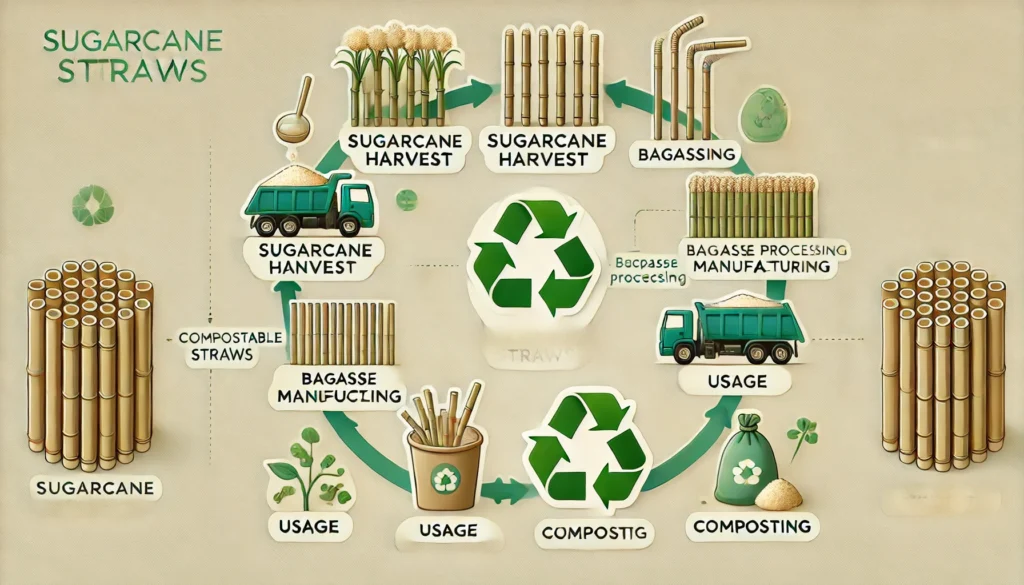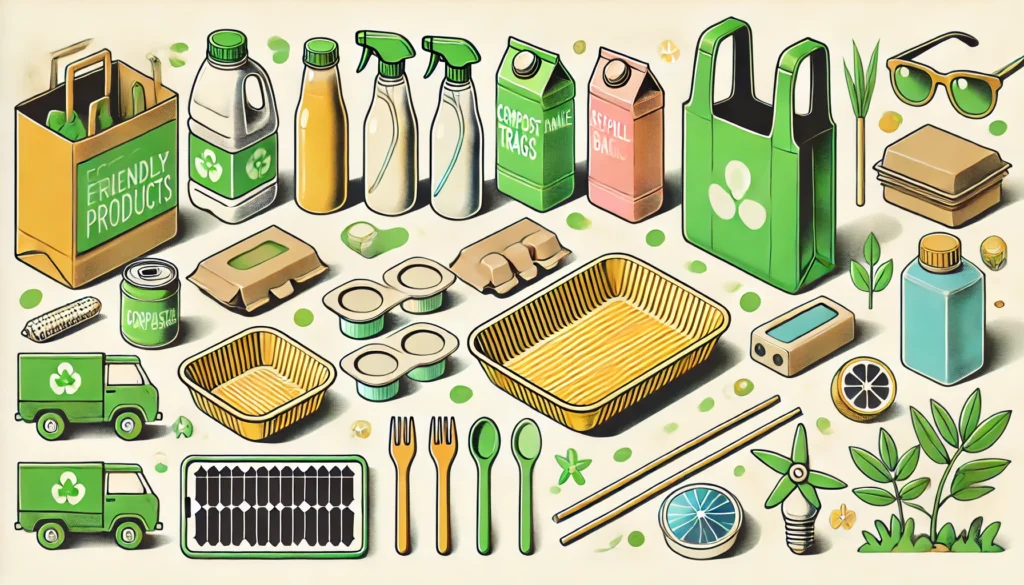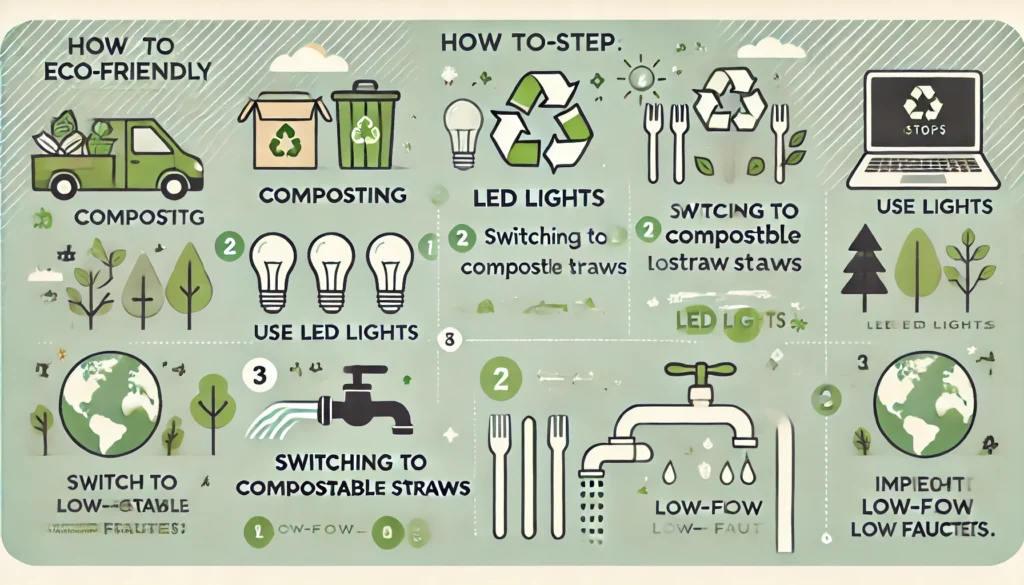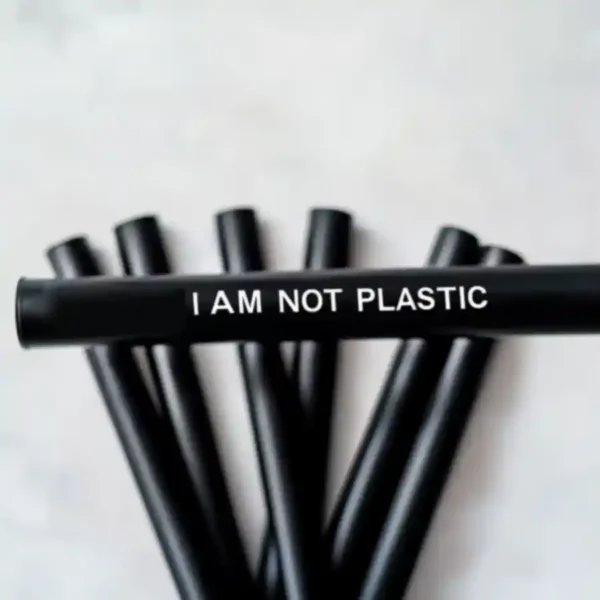The term “eco-friendly” has gained immense traction as businesses and individuals seek to reduce their environmental footprint. Understanding what eco-friendly means and adopting sustainable practices is crucial for both the planet and future generations. This guide explores the concept, distinguishes it from related terms, and offers actionable insights for implementation.

What Does Eco-Friendly Mean?
Eco-friendly refers to products, services, and practices that minimize harm to the environment. They are designed to reduce pollution, conserve resources, and promote a healthier ecosystem. For example, eco-friendly sugarcane straws are an excellent alternative to traditional plastic straws, reducing single-use waste.
Key Characteristics:
- Sustainable Materials: Made from renewable sources like sugarcane or coffee grounds.
- Minimal Waste: Packaging is often recyclable or compostable.
- Low Environmental Impact: Designed to have a minimal carbon footprint during production and disposal.
Additional Insight: The Environmental Context
Using eco-friendly products such as individually wrapped smoothie coffee grounds straws helps to reduce the environmental damage caused by single-use plastics, which often end up in oceans or landfills.

Green vs. Sustainable vs. Eco-Friendly
Although these terms are often used interchangeably, they have distinct meanings.
| Term | Scope | Focus |
|---|---|---|
| Eco-Friendly | Narrow | Immediate environmental harm reduction. |
| Green | Broader | General environmental consciousness. |
| টেকসই | Comprehensive | Long-term balance of environmental, social, and economic factors. |
For example, while biodegradable sugarcane tableware is eco-friendly, its sustainability also depends on production processes and post-use waste management.
Historical Context of Eco-Friendly Practices
Eco-friendly practices trace back to the environmental movement of the 1960s and 70s. Key milestones include:
- The Clean Air Act (1970): Regulated air pollution.
- The Clean Water Act (1972): Focused on water pollution reduction.
- The Paris Agreement (2015): Established global goals to combat climate change.
Businesses like প্রকৃতিবিওকো have embraced these principles to offer innovative, sustainable solutions such as compostable coffee grounds straws।
Why Does Being Eco-Friendly Matter?
Environmental Benefits:
- Pollution Reduction: Less waste in landfills and oceans.
- Biodiversity Preservation: Conserves habitats and ecosystems.
Economic Benefits:
- ব্যয় সাশ্রয়: Reduces energy consumption and waste management costs.
- Market Opportunities: Growing demand for sustainable products like individually wrapped boba sugarcane straws।
Social Benefits:
- Promotes public health by reducing pollutants.
- Addresses global climate challenges.
Identifying Genuine Eco-Friendly Products
Avoid greenwashing (false eco-friendly claims) by looking for:
- Certifications::
- Energy Star, USDA Organic, FSC Certification.
- Read the Labels::
- Verify claims like “biodegradable” or “compostable.”
- Verified Products::
- Examples include eco-friendly cocktail straws।

Practical Tip:
Look for transparency in the production process. For instance, sugarcane-based tableware like sugarcane food trays decomposes naturally, reducing waste.
Practical Steps to Adopt Eco-Friendly Practices
For Individuals:
- Replace single-use items with reusable alternatives like smoothie coffee grounds straws।
- Use energy-efficient appliances and turn off unused devices.
- Opt for public transport, cycling, or walking.
For Businesses:
- Transition to compostable packaging, such as regular sugarcane straws।
- Implement waste reduction strategies like recycling programs.
- Source materials from sustainable suppliers.

Challenges and Solutions
Higher Costs:
- Solution: Highlight long-term savings from energy efficiency and tax incentives.
Consumer Skepticism:
- Solution: Use certified eco-friendly labels and transparent practices.
Infrastructure Gaps:
- Solution: Collaborate with local recycling and waste management programs.
Interactive Tools and Personal Stories
Interactive Features:
- Carbon Footprint Calculator: Help users measure their personal impact.
- Eco-Friendly Quiz: Encourage engagement by letting readers assess their eco-friendly habits.
Inspirational Stories:
Share a story of how a small cafe reduced waste by switching to compostable cutlery, inspiring customers to adopt eco-friendly habits.
The Future of Eco-Friendly Practices
Emerging trends like circular economies and renewable energy will further drive eco-friendly innovation. Businesses must embrace these opportunities to stay competitive and sustainable.
FAQ Section
- What does eco-friendly mean?
Eco-friendly refers to practices that minimize environmental harm, such as reducing waste or conserving energy. - What are some eco-friendly products?
Examples include biodegradable sugarcane straws and reusable water bottles. - How do I identify genuine eco-friendly products?
Look for certifications like Energy Star and USDA Organic, or explore trusted suppliers like প্রকৃতিবিওকো। - What’s the difference between eco-friendly and sustainable?
Eco-friendly focuses on immediate environmental impact, while sustainability includes long-term social and economic considerations. - Why are eco-friendly products more expensive?
Sustainable materials and ethical production processes increase initial costs but save money long-term. - What role do certifications play?
Certifications verify that products meet specific environmental standards. - How can small businesses adopt eco-friendly practices?
Start small, like switching to compostable packaging or offering customizable straws। - What are the future trends in eco-friendly practices?
Expect growth in renewable energy, zero-waste initiatives, and AI-driven sustainability tools.
Citations
- Eco-Friendly Meaning
- Sustainability Insights
- Greenwashing Guide
- প্রকৃতিবিওকো
- Certifications for Eco-Friendly Products
This updated blog incorporates suggestions like fresh perspectives, internal links, interactive features, and actionable insights to make the content stand out. Let me know if you’d like further adjustments!







